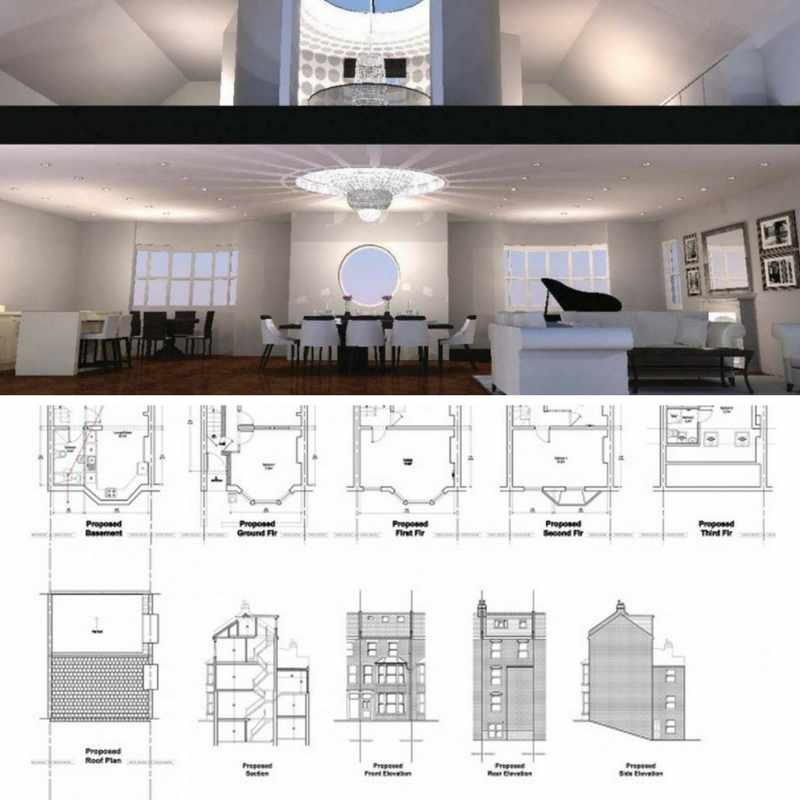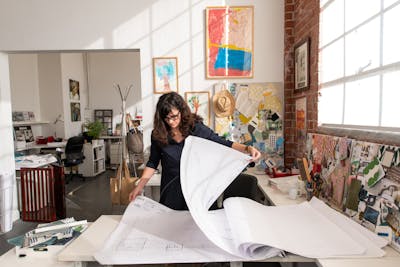The Art of Balance: Exactly How Interior Design and Home Architect Collaborate for Stunning Results
In the realm of home design, striking a balance between aesthetic appeals and capability is no small feat. This fragile stability is attained via the unified partnership between interior designers and engineers, each bringing their one-of-a-kind proficiency to the table. Stay with us as we discover the details of this joint procedure and its transformative effect on home design.
Understanding the Core Distinctions In Between Interior Design and Home Architecture
While both Interior Design and home style play necessary functions in creating aesthetically pleasing and practical areas, they are inherently various self-controls. Home architecture primarily concentrates on the structural aspects of the home, such as constructing codes, security policies, and the physical building and construction of the room. It handles the 'bones' of the structure, functioning with spatial dimensions, bearing walls, and roofing designs. On the various other hand, Interior Design is extra worried with enhancing the sensory and visual experience within that framework. It involves choose and organizing furnishings, selecting color pattern, and incorporating ornamental elements. While they operate in tandem, their roles, obligations, and areas of know-how diverge dramatically in the creation of an unified home environment.
The Harmony Between Home Design and Inside Layout
The synergy between home design and Interior Design hinges on a shared vision of style and the improvement of useful aesthetic appeals. When these 2 areas align harmoniously, they can transform a space from ordinary to amazing. This cooperation calls for a deeper understanding of each discipline's principles and the capability to produce a natural, cosmetically pleasing setting.
Unifying Layout Vision
Unifying the vision for home style and interior layout can produce a harmonious living room that is both practical and aesthetically pleasing. It advertises a synergistic strategy where architectural components enhance interior style components and vice versa. Hence, unifying the design vision is critical in blending architecture and interior layout for spectacular results.
Enhancing Functional Visual Appeals
Just how does the harmony between home style and Interior Design improve practical looks? This synergy allows the production of spaces that are not only aesthetically attractive however also pleasantly functional. Engineers prepared with their architectural layout, ensuring that the area is effective and functional. The indoor designer after that matches this with meticulously chosen aspects that boost the visual appeals without endangering the functionality. This unified partnership can lead to homes that are both gorgeous and livable. An engineer may design a home with high ceilings and large windows. The interior designer can then accentuate these functions with sheer curtains and tall plants, specifically, thus boosting the visual allure while maintaining the functional advantages of all-natural light and space.
Relevance of Cooperation in Creating Balanced Spaces
The partnership between interior developers and engineers is crucial in creating well balanced rooms. It brings harmony between design and style, bring to life spaces that are not just aesthetically pleasing however also functional. Exploring effective collaborative methods can supply understandings into my blog how this synergy can be effectively achieved.
Harmonizing Style and Architecture
Equilibrium, an essential element of both indoor design and architecture, can just really be achieved when these 2 fields work in harmony. This joint procedure results in a natural, balanced layout where every aspect adds and has an objective to the general aesthetic. Balancing style and style is not just about producing beautiful areas, but about crafting spaces that function flawlessly for their citizens.
Successful Joint Approaches

Instance Studies: Successful Assimilation of Style and Architecture
Taking a look at numerous case researches, it emerges how the effective integration of Interior Design and style can transform an area. The Glass Home in Connecticut, renowned for its minimalistic elegance, is one such example. Architect Philip Johnson and indoor designer Mies van der Rohe teamed up to develop a from this source harmonious balance between the inside and the structure, causing a seamless circulation from the exterior landscape to the internal living quarters. Another exemplar is the Fallingwater Residence in Pennsylvania. Designer Frank Lloyd Wright and indoor designer Edgar Kaufmann Jr.'s joint initiatives bring about a strikingly unique home that mixes with its natural surroundings. These instance studies underscore the profound impact of a successful layout and style partnership.

Overcoming Obstacles in Style and Architecture Cooperation
In spite of the undeniable advantages of a successful cooperation between Interior Design and design, it is not without its challenges. Interaction problems can arise, as both celebrations may make use of different terms, understandings, and methods in their job. This can result in misconceptions and delays in task completion. An additional major obstacle is the balancing act of appearances and performance. Engineers may focus on structural stability and safety and security, while designers concentrate on comfort and style. The assimilation of these objectives can be complicated. In addition, budget and timeline restrictions typically include pressure, potentially creating rifts in the partnership. Efficient interaction, common understanding, and compromise are essential to get rid of these obstacles and achieve a harmonious and successful partnership.

Future Trends: The Advancing Connection In Between Home Architects and Interior Designers
As the globe of home design remains to develop, so does the partnership between designers and indoor designers. The fad leans towards a much more integrated and collective technique, damaging devoid of typical roles. Engineers are no longer exclusively concentrated on architectural honesty, yet additionally involve in improving aesthetic appeal - Winchester architect. Conversely, indoor developers are accepting technical aspects, influencing general layout and capability. This advancing synergy is driven by improvements in modern technology and the expanding need for spaces that are not only visually pleasing however likewise useful and lasting. The future guarantees an extra natural, innovative, and adaptive approach to home style, as developers and engineers remain to obscure the lines, cultivating a partnership that truly embodies the art of balance.
Verdict
The art of balance in home layout is achieved via the harmonious cooperation between indoor designers and engineers. In spite of challenges, this collaboration fosters development and development in layout.
While both interior layout and home architecture play crucial functions in developing visually pleasing and useful spaces, they are naturally different self-controls.The harmony between home design and indoor design exists in a common vision of style and the improvement of functional looks.Combining the vision for home design and indoor design can produce an unified living click over here space that is both practical and cosmetically pleasing. Hence, unifying the design vision is critical in mixing architecture and indoor design for spectacular outcomes.
Exactly how does the harmony in between home design and indoor design enhance functional aesthetics? (Winchester architect)